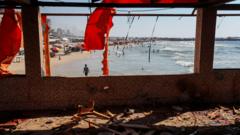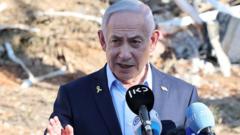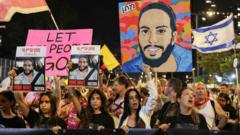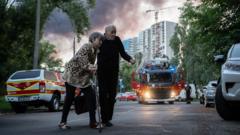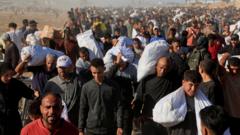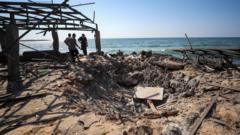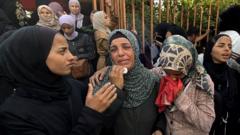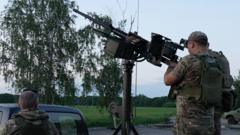Ayatollah Ali Khamenei's first public appearance since the conflict with Israel showcases the reactions of both supporters and international observers, indicating a shift in national sentiment following recent military escalations.
Khamenei's First Public Appearance Amid Israel Conflict: A National Response
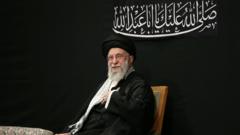
Khamenei's First Public Appearance Amid Israel Conflict: A National Response
Iran’s Supreme Leader reemerges as tensions rise with Israel, capturing national attention during Ashura preparations.
Iran's Supreme Leader Ayatollah Ali Khamenei has made a notable public appearance for the first time since the outbreak of the conflict with Israel, marking a significant moment captured by state media. Photographs and footage aired on Iranian state television displayed Khamenei greeting worshippers at Tehran's Imam Khomeini Mosque during a ceremony aligned with the Shia festival of Ashura, which is traditionally observed with deep reverence in the country.
Prior to this public event, Khamenei's presence had been scarce, with his last notable address being a recorded message following a ceasefire that ended a 12-day military confrontation between Iran and Israel. This conflict, which began on June 13, claimed the lives of several Iranian military commanders and nuclear scientists amid Israel's surprise attacks on Iranian facilities. In response, Iran conducted aerial strikes against Israeli targets.
During the duration of the conflict, speculation flooded the media concerning Khamenei's whereabouts, with many suggesting he had retreated to a bunker. Throughout the turmoil, he had made several televised statements, during which he asserted Iran's supposed triumph, claiming that the U.S. had not made significant gains from its military actions against Iranian nuclear assets.
Khamenei's recent emergence coincided with patriotic fervor as he encouraged the singing of the national anthem, "O Iran," a song that surged in popularity amid the recent hostilities. Coverage of his appearance dominated Iranian media, with jubilant citizens expressing their support and relief at witnessing their leader publicly reaffirming his presence.
The occasion is particularly poignant as Iran, a predominantly Shia Muslim nation, observes a mourning period during the month of Muharram, leading up to Ashura on July 6, which commemorates the martyrdom of Hossein, the grandson of the Prophet Muhammad.
Compounding the context, the U.S. also engaged in the conflict with strikes targeting Iranian nuclear facilities shortly after the onset of hostilities. Iranian authorities reported over 900 fatalities resulting from the war, revealing the depth of the loss felt across the nation.
With Khamenei back in the public sphere, the Iranian leadership hopes to galvanize national sentiment amid a turbulent geopolitical landscape that continues to evolve.

